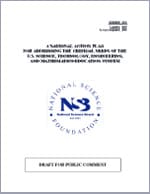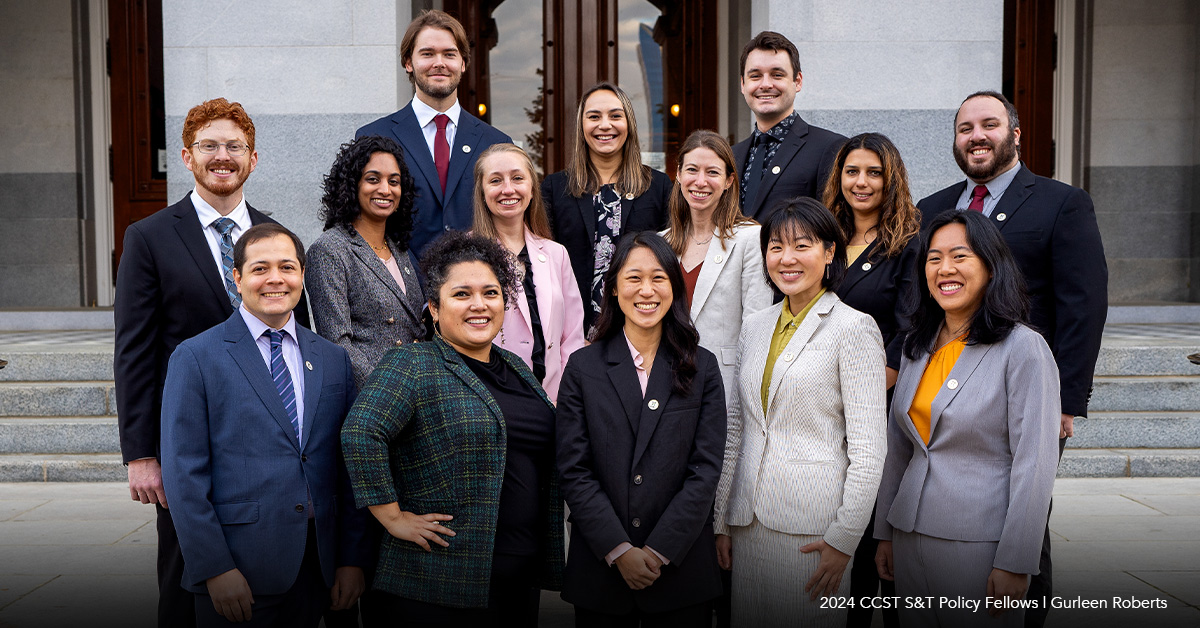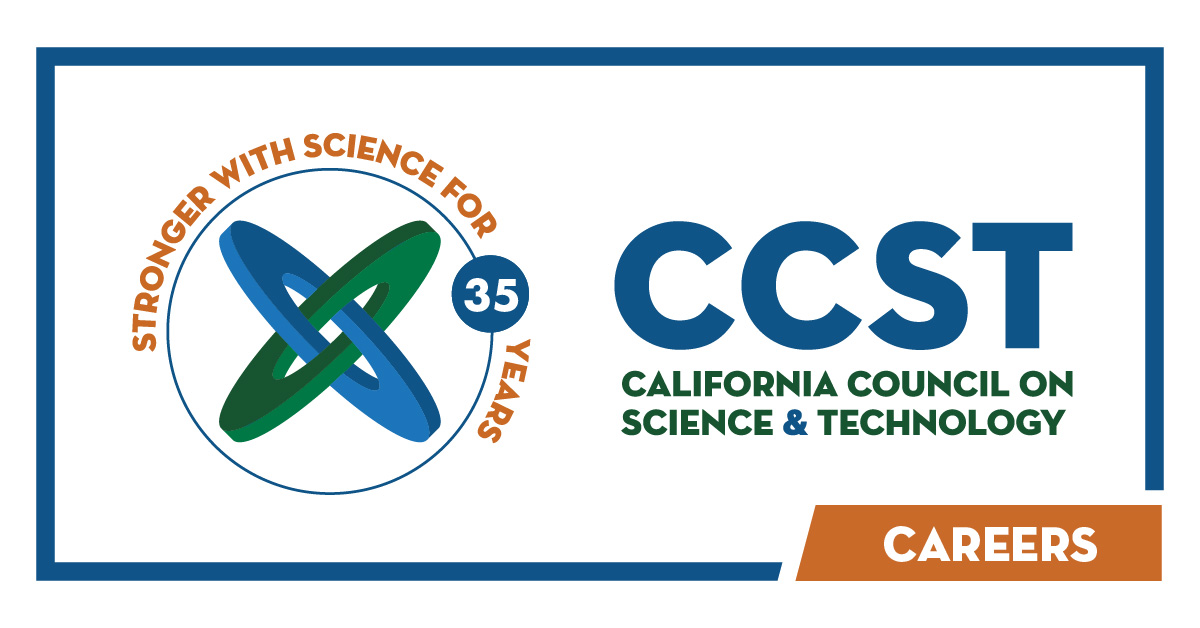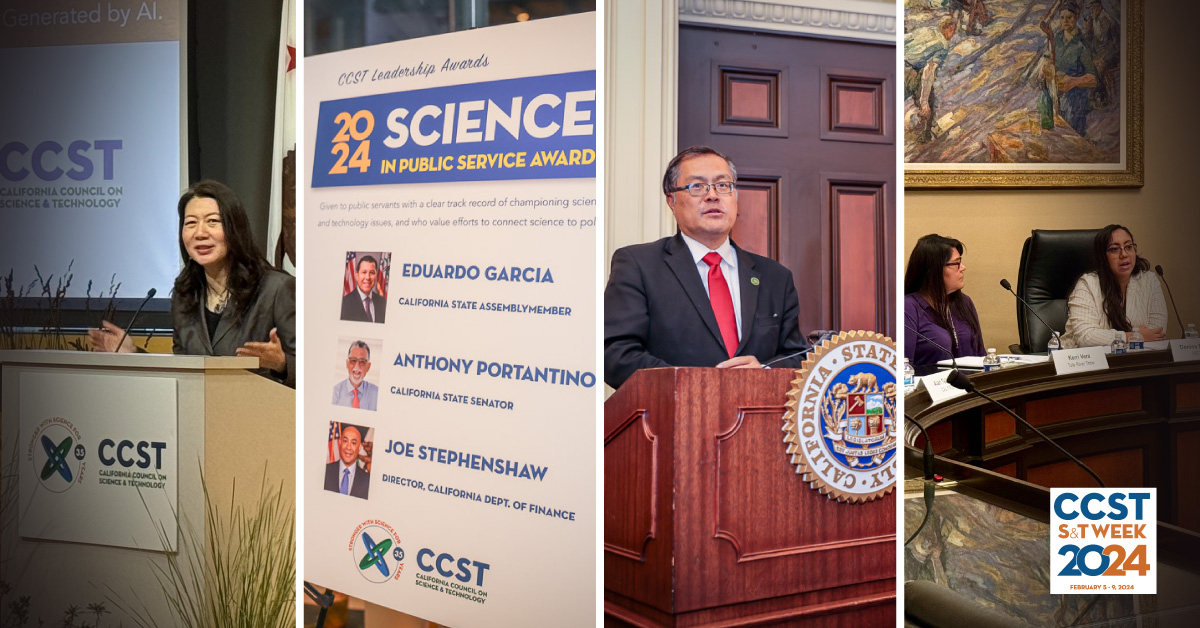NSB Draft Report Offers National Roadmap to Address STEM Education Woes
September 5, 2007 | CCST Newsroom | Contact: M. Daniel DeCillis

The National Science Board (NSB) has released a draft report of a long-awaited plan to address challenges with science, technology, engineering, and mathematics (STEM) education. The report’s findings resonate strongly with CCST’s recent work on science and math teacher preparation in California and with its recommendations for a California response to similar issues raised in the National Academies report “Rising Above the Gathering Storm.”
In its draft report, “A National Action Plan for Addressing the Critical Needs of the U.S. Science, Technology, Engineering, and Mathematics Education System“, the NSB outlines two main challenges for the nation’s STEM education system: ensuring coherence throughout the system, and ensuring an adequate supply of well-prepared, effective STEM teachers. Many of its recommendations focus on ways to coordinate and improve coherence in science and math education, aligning curricula from pre-kindergarten through postsecondary education and offering more consistency among states. It would achieve these objectives by creating several new entities, federal and non-federal, and urging the creation of national STEM content guidelines and metrics, and national STEM teacher certification standards.
“The message about the need for well prepared math and science teachers is one with which we strongly concur,” said CCST Director of Programs Donna Gerardi Riordan. “In the March 2007 CCST report, Critical Path Analysis of California’s Science and Mathematics Teacher Preparation System, CCST concluded that strengthening the teaching of mathematics and science is critical if California is to maintain its competitive edge and economic growth. The NSB report provides an important national perspective on this issue and offers valuable suggestions for coordinating efforts to improve STEM education nationwide.”
The NSB action plan was conceived of during the development of the 2006 Science and Engineering Indicators. The Board noted worrisome trends in STEM education and commented on these in the Indicators companion piece, America’s Pressing Challenge – Building a Stronger Foundation. As a result of its observations and a request from Congress, the Board began to consider developing a national action plan to address the nation’s needs for improvements in STEM education. The Board held a series of hearings around the U.S. to gather expert testimony from leaders in STEM education in 2005 and 2006. The draft was made public on August 8; public comment was accepted through August 30. The document will be finalized at the next Board meeting in October and publicly distributed in early December.
Among other things, the draft report recommends that the Education Department establish a new Assistant Secretary of Education position, that the White House Office of Science and Technology Policy create a standing STEM education committee within the cabinet-level National Science and Technology Council, and that Congress legislate the chartering of an independent, non-federal National Council for STEM Education. It also recommends that national STEM content guidelines and metrics be defined. To improve the quality of the science and math teaching workforce, the report recommends that STEM teachers be compensated at market rates; that sufficient resources be allocated to educate future STEM teachers; and that teachers be prepared to teach STEM content effectively. There are several parallels between the NSB recommendations and the recommendations given to the governor by CCST last year in California’s Response to “Rising Above the Gathering Storm”, which proposed similar measures for California.
“The creation of an entity to facilitate coordination of STEM education efforts nationwide would be a significant step towards addressing the many serious challenges that the country faces,” said Riordan. “The NSB’s report is a timely document with the potential to provide important focus and momentum around specific actions to improve STEM education.”
The NSB is the governing body of the National Science Foundation, a federal government agency that supports fundamental research and education in all the non-medical fields of science and engineering. With an annual budget of about $5.91 billion (fiscal year 2007), NSF funds approximately 20 percent of all federally supported basic research conducted by the United States’ colleges and universities.






